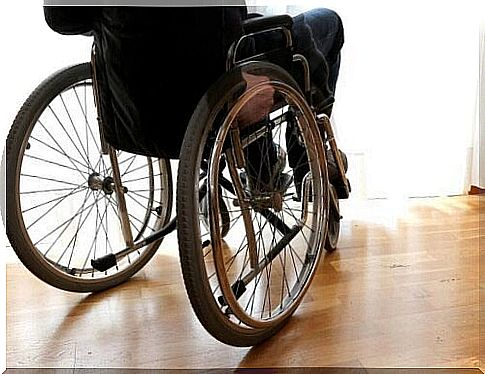World Rare Disease Day
Rare diseases tend to be overlooked because they affect a small group. As a result, those affected pay for the consequences of lack of health equity. However, the world day seeks to raise awareness.

Being ill represents an adverse scenario in which there is some degree of uncertainty. However, suffering from a disease that little is known about and that the health care system is not prepared to deal with is a tragedy. From this unfavorable situation, the World Rare Disease Day was created, an initiative of awareness and progress.
The last day of February was the date set for a campaign to reduce the isolation of people with rare diseases. In addition, the aim is for medicine to also advance in favor of atypical diseases which, according to data from the World Health Organization (WHO), affect 7% of the world’s population.
We believe there is no better time to clarify what a rare disease is, some historical data on it. How to help a diagnosed person and how you can help around the time of the world day.
What is a rare disease?
A rare disease is defined as any pathology that affects a small part of the world’s population. If you look at the numbers, the disease is considered rare when it affects less than 5 people per 10,000 inhabitants. In addition, the number of rare diseases is estimated to be around 7,000. Here are some of the most unusual.
Ebstein anomaly
Ebstein’s anomaly is a disease or defect of the heart that occurs from birth. What is happening is that the tricuspid valve has an incorrect location. Likewise, the valve flaps do not have a normal structure. The consequences can be an enlarged heart, heart failure or blood leaking through the valve.
Moebius syndrome
Moebius syndrome is considered to be a rare and congenital neurological disease that causes paralysis of the face. In addition, there are variations in eye abduction, swallowing problems, lack of correct pronunciation, among others. Its origin is the insufficient development of the cranial nerves 6 and 7.
Chediak-Higashi disease
Chediak-Higashi disease is caused by an alteration and recessive mutation in the lysosomal gene. The consequences of this anomaly are noted in the body’s defenses, as they do not perform the functions of containing the external agents that attack the body.
Thus, the phagocytic function – which consists of the selective elimination of damaged cells or microbes – is limited. The above leads to problems with branching out from anemia, repetitive infections, and increased liver size.
Bardet-Biedl syndrome
It is an autosomal recessive disease that affects different areas of the body. Obesity, reproductive organ dysfunction, mental retardation, polydactyly and heart defects can occur, to name just the main alterations.
Hermansky-Pudlak syndrome
It is a genetic and multisystem disorder that includes 8 independent disorders. Some of these disorders are oculocutaneous albinism, pulmonary fibrosis, granulomatous kidney disease, hemorrhagic disease, etc.
Expanding on the above information a bit, other diseases that are rare, but have a higher relative frequency, are included in the following list :
- Elephantiasis.
- Myasthenia gravis.
- Progeria.
- Amyotrophic lateral sclerosis (ALS).
- Goodpasture syndrome.
- Tarlov cyst.

Historical facts about World Rare Disease Day
The last day of February has been defined as World Rare Disease Day for a very special reason. The second month of the year differs from the other months because of the rarity of the leap component. Thus, it was decided to use the most atypical period to give importance to the progress in favor of rare diseases.
Its celebration began in 2008 and the general motto defended by all those who join the cause is “Research is our hope”. Also, in this year’s official presentation, the slogan reads “We are few, we are many, we are strong and we are proud”.
The commemoration was born from the relatives of those affected. They fought to give them a voice and eliminate the stigmatization of the isolated, so that there is equal treatment from the health system.
Thus, European companies such as the European Organization for Rare Diseases (EURORDIS) and the Spanish Federation of Rare Diseases (FEDER) have joined the cause and the expansion is now global. It is also possible to note the presence of the National Organization for Rare Disorders (NORD). This organization appears to be an extremely collaborative American group.
How to help someone diagnosed with a rare disease?
The diagnosis of a rare disease is a complex reality to assimilate. The diagnosis produces uncertainty, fear, cases of depression and anxiety. Therefore, the following care is recommended to help the patient progress:
- Understand the disease. Although these are rare diseases, knowing in detail what the disease is and how it progresses can lead the environment to move in the same favorable direction.
- Make consistent decisions. When choosing the course of treatment or analyzing all the options, the impulsiveness of the moment should not play a role. It’s best to wait until calm returns and use consistency as a compass.
- Don’t neglect emotional health. Help the patient to release his emotions, doubts and fears from communication. This will give it stability throughout the subsequent process.
- Use professional psychological support. The psychological disorder has a high probability of appearing at some stage. Therefore, anticipating with qualified psychological help is an excellent strategy to avoid psychopathological disorders.
How can you support World Rare Disease Day?
Support that can be given to World Rare Disease Day ranges from a small gesture to organizing an event to collect donations. Therefore, some interesting ideas are as follows:
- Use the networks to give visibility to World Rare Disease Day with a photo of the official logo.
- Comment on networks with a message of encouragement using the hashtag #RareDiseaseDay .
- Publish statistics so that the problem affecting patients takes the real priority it deserves.
- Organize any event in favor of environmental protection. Raise funds to continue research into treatments for rare diseases.
- Tactfully expose a close case to raise awareness.
What to remember from World Rare Disease Day?
Empathetic participation in World Rare Disease Day is the basis for continuing evolution so that those affected are no longer an exception to advanced treatments.
The last day of February remains a reminder, but collaborations and initiatives can be made at any time of the year. Integration is the solution and it is in our hands. Together we are stronger !









